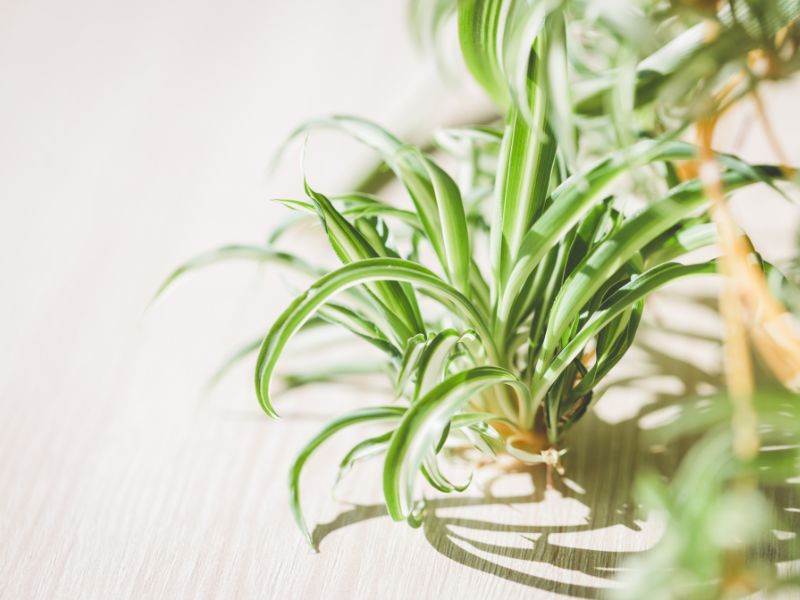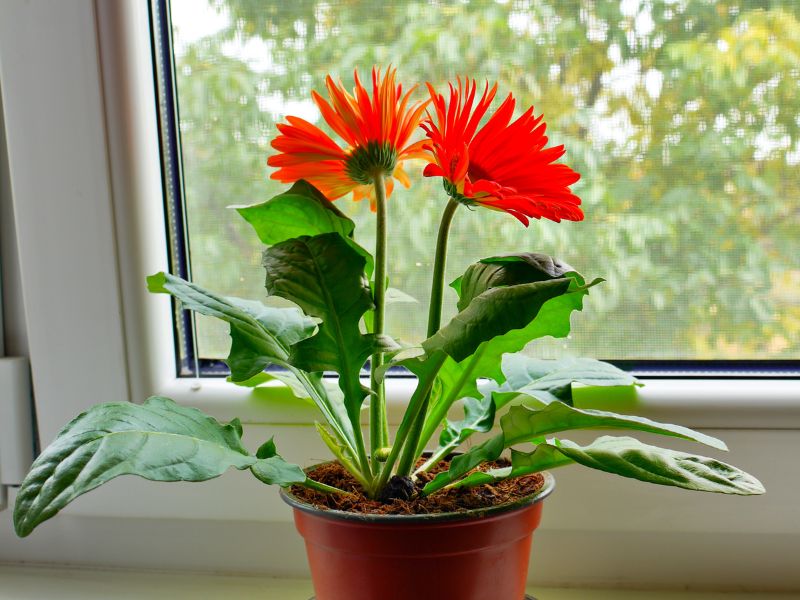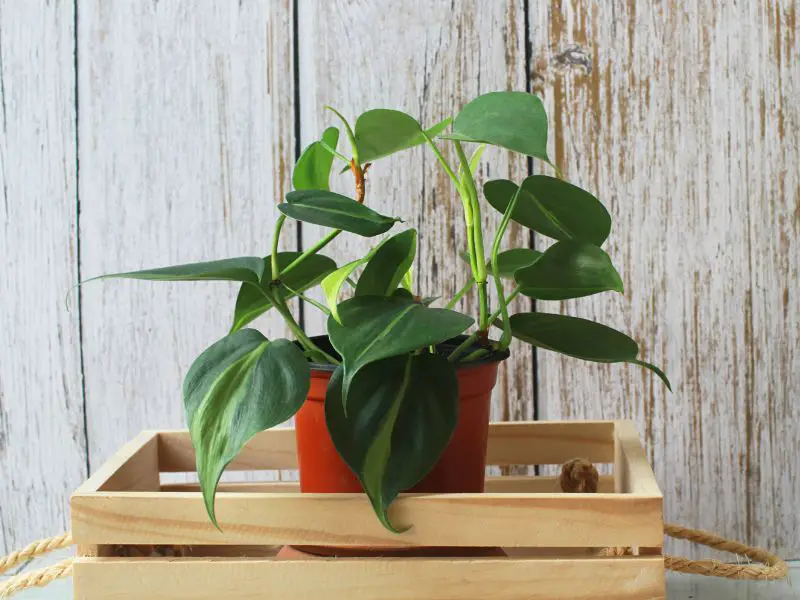Discover how NASA’s top 10 air purifying plants can naturally enhance your indoor air quality. These plants, backed by the NASA Clean Air Study, have proven abilities to remove toxins and improve health. From English Ivy to Heart Leaf Philodendron, explore the benefits of these plants in creating a healthier and more beautiful indoor environment.
NASA’s Clean Air Study
The NASA Clean Air Study, conducted with the Associated Landscape Contractors of America in 1989, explored ways to purify air in sealed environments like space stations. It revealed certain plants’ ability to remove harmful toxins, improving air quality and health.
Dr. B.C. Wolverton tested a dozen houseplants for toxin-removal efficiency, leading to a list of NASA’s top 10 air purifying plants. Certain plants, such as the spider plant and peace lily, excel at removing specific toxins like formaldehyde and benzene, respectively.
In addition to detoxifying, plants can reduce stress and elevate mood. Consider incorporating these air purifying plants to improve your home or office’s air quality.
Understanding Indoor Air Quality
Maintaining clean and healthy air indoors, where we spend most of our time, is essential for our well-being. Outdoor pollution, building materials, and indoor activities influence indoor air quality. Health problems can arise from indoor pollutants such as dust, mold, pet dander, and volatile organic compounds (VOCs) from cleaning products, paints, and furniture.
Indoor air can be up to five times more polluted than outdoor air, emphasizing the importance of air pollution abatement. Radon, a lung cancer-causing radioactive gas, can infiltrate buildings through foundation cracks, making radon testing vital.
These NASA top 10 air purifying plants can effectively eliminate these pollutants, significantly improving indoor air quality. Understanding and improving indoor air quality through pollutant removal, radon testing, and good ventilation is critical for a healthy indoor environment.
The Role of Houseplants in Purifying Air
If you want to improve the air quality in your home or office, consider adding houseplants to your decor. Not only do they add a dash of greenery to your space, but they can also act as natural air purifiers.
Plants absorb carbon dioxide and release oxygen through photosynthesis.? NASA has researched the topic and even identified the top 10 air purifying plants you can use in your home or office.
Adding NASA top 10 air purifying plants to your indoor space can help remove pollutants such as formaldehyde, benzene, and trichloroethylene. These toxins can be found in common household items such as cleaning products, furniture, and carpets.
Not only do these air purifying plants help remove toxins from the air, but they also add humidity to the environment. This can be particularly beneficial during the winter when the air can dry and cause respiratory issues.
Common houseplants that made the NASA top 10 air purifying plants list include the snake, peace lily, and spider. These plants are easy to care for and can thrive in various indoor environments.
Adding houseplants to your indoor space not only helps improve air quality but can also positively impact your mental health. Studies have shown that being around plants can reduce stress and improve mood.
How Plants Purify Air
NASA’s top 10 air purifying plants act as natural detoxifiers, absorbing harmful pollutants through their leaves and roots and converting them into oxygen. They effectively combat indoor air pollutants like formaldehyde, benzene, and trichloroethylene. Plants help to create a healthier breathing environment by absorbing carbon dioxide and releasing oxygen.
Microorganisms present in the plants’ roots assist in breaking down harmful pollutants into new plant tissue, aiding air purification. The leaves also contribute to this process, absorbing pollutants and discharging oxygen through photosynthesis.
As a result, indoor air becomes free from harmful chemicals and toxins. Thus, these plants are an efficient way to improve indoor air quality and promote healthier living conditions.
Understanding Specific Pollutants and Their Effect on Health
NASA’s top 10 air purifying plants can reduce common pollutants in the home like formaldehyde, benzene, trichloroethylene, xylene, ammonia, and toluene.
These plants can alleviate health concerns, including respiratory issues, headaches, dizziness, and nausea, and they also help with pre-existing conditions like asthma and allergies.
Besides purifying the air, they can mitigate allergens, curb mold growth, and add natural beauty to your home or office, enhancing both health and aesthetic appearance,
NASA Top 10 Air Purifying Plants
1. English Ivy
Jump into cleaner air with NASA’s top 10 air purifying plants featuring the English Ivy.
Adorn your bedroom with this easy-to-care-for plant that climbs high and combats harmful air toxins like benzene, formaldehyde, xylene, and toluene.
But the Ivy doesn’t stop there! It puts the smackdown on mold and uses its sticky leaves as a secret weapon to capture sneaky allergens like dust, pollen, and pet dander. Talk about a breath of fresh air.

2. Chrysanthemums
Meet the Chrysanthemums, also known as “mums.” They’re on NASA’s top 10 list for air-purifying plants, helping clean indoor air. But be careful, pet owners! Mums aren’t safe for cats and dogs.
Plus, these plants aren’t just pretty. They also help remove pollutants like ammonia. So, mums are great for cleaner air. Just remember to keep them away from your pets.

3. Areca Palm
The Areca Palm is a pretty houseplant that also makes our air cleaner. It’s of NASA’s top 10 plants that purify the air and is safe for kids and pets.
Studies show that this palm can eliminate harmful things in the air, like benzene and trichloroethylene. It can also remove other nasty stuff, like mold and bacteria. These things can make us sick, but the Areca Palm helps protect us.
The Areca Palm is especially good at removing formaldehyde, a common pollutant found in many household items. This palm can also lessen allergens and carbon dioxide levels. Plus, it can make the air in your home less dry by releasing water vapor.
So, this plant doesn’t just make your home look excellent. It helps clean the air too.

4. Snake Plant
Have you ever heard about the “Mother-in-Law Tongue” plant? Also known as the Snake plant, it’s a standout feature in NASA’s top 10 air purifying plants. It’s a breeze to take care of an excellent houseplant requiring minimum light and water.
Perfect for apartments, dimly-lit rooms, or bedrooms, the Snake plant diligently cleanses your indoor air.
A study by the Journal of the American Society for Horticultural Science confirms its power – this humble plant efficiently eliminates several volatile organic compounds, including benzene, formaldehyde, and trichloroethylene, from your surroundings. And all this happens while you relax in your comfy living space.

5. Pothos
This NASA Top 10 Air Purifying Plants list highlights houseplants that excel in indoor pollutant removal, such as Golden Pothos (Epipremnum aureum) and Money Tree (Pachira aquatica).

Due to its resilience, Golden Pothos, also known as Devil’s Ivy, efficiently removes volatile organic compounds, including benzene and trichloroethylene. Noteworthy Pothos varieties include:
- Marble Queen: With intensely variegated leaves, each unique from the other.
- Snow Queen: Known for almost entirely white or cream leaves.
- Neon: Flaunts a bright, neon-green color.
- Pearls and Jade: Dark green leaves with white or cream edges.
- Glacier: Green with white and mint green or silvery streaks.
- Jessenia: Showcases light green variegation with a distinctive midrib vein.
- Shangri La: Unique with rolled-up, ribbed leaves.
- Global Green: Lightly crumpled leaves with light green variegation.
- Jade: Ideal for low-light homes and beginner gardeners.
- Cebu Blue: Stunning narrow, silvery green leaves.
- Baltic Blue: Dark green leaves with a bluish tint, splitting even at a young age.
The Money Tree, another plant recognized in the NASA Clean Air Study, excels at removing benzene, trichloroethylene, and formaldehyde. It purifies the air through photosynthesis, taking in carbon dioxide and releasing oxygen.
Additionally, its phytoremediation capability allows it to absorb harmful chemicals, breaking them down into harmless byproducts and boosting indoor air quality.
6. Rubber Plants
As part of NASA’s top 10 air purifying plants, the stylish and low-maintenance rubber plant (Ficus robusta) is a renowned toxin-buster. Just note it’s also listed among toxic houseplants for pets and humans. Regularly wipe its leaves with a damp cloth to maintain its effectiveness in purging airborne toxins and mold spores.

7. Aloe Vera
Aloe Vera, a succulent and popular household plant, is known for its easy care and medicinal uses like burn treatment. Still, it also shines as one of NASA’s top 10 air purifying plants. It remarkably purifies indoor air by eliminating harmful volatile organic compounds like benzene, trichloroethylene, and formaldehyde.

8. Spider Plant
Spider plants efficiently purify your home’s air, eliminating toxins like formaldehyde and xylene.
They’re low-maintenance, sturdy, and safe. NASA research indicates they can eliminate up to 95% of harmful chemicals, including carbon monoxide, within a day, absorbing pollutants via their leaves and roots.

9. Gerbera Daisy
The Gerbera Daisy (Gerbera Jamesonii) is a stunning houseplant in various colors. It not only enhances the aesthetic appeal of your space but also contributes to better air quality and improved sleep.
Remarkably, studies have shown that within 24 hours, these flowers can reduce airborne formaldehyde by 50%, benzene by 67%, and trichloroethylene by 35%. Experience the beauty of Gerbera Daisy while enjoying its air-purifying benefits for a restful night’s sleep.

10. Heart Leaf Philodendron
Heart Leaf Philodendron is a fantastic climbing vine that thrives in pet- and child-free households. It’s important to note that this plant is toxic if ingested. However, its remarkable ability to eliminate formaldehyde, a common component of particleboard, makes it an ideal choice.
When it comes to maintenance, the Heart Leaf Philodendron is relatively low-maintenance. Nevertheless, it’s crucial to position the plant at a height that ensures the safety of pets and small children. By taking these precautions, you can enjoy the benefits of this plant without any worries.

Author’s Note
To sum up, NASA’s Top 10 Air Purifying Plants are a great way to improve the air quality in your home or office. These plants have been scientifically proven to filter out harmful toxins and pollutants, making them a natural and effective way to promote better health and wellbeing. From the peace lily to the snake plant, each plant has its own unique benefits and can add beauty and serenity to any space.
So why not bring a little bit of nature indoors and enjoy the many benefits of these amazing plants? Choose your favorite from NASA’s list and start purifying the air in your home or office today!
Explore the benefits of green walls, green roofs, and learn how living an eco-friendly lifestyle can lead to greater happiness and fulfillment. Discover how these sustainable practices can improve air quality, reduce energy consumption, and promote biodiversity in urban environments. Additionally, Discover the essential planting tools you need for a successful garden, from hand trowels to pruning shears.

